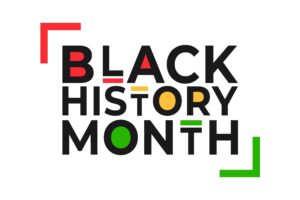This is the language that falls flat in philanthropy communications
Storytelling plays a massive role for nonprofit communicators. Here’s how your words can build trust and dedication.

Reaching donors and other stakeholders is a key mission for any philanthropic foundation or nonprofit organization. But determining the messaging that reaches them most effectively can be an arduous task.
But new research from the Council on Foundations and the University of Florida Center for Public Interest Communications sheds new light on the language and techniques that most resonate with audiences — and those that leave them cold.
Most communicators in the philanthropic space are already bought into the importance of storytelling. Seventy-eight percent of professionals in the industry said they use storytelling in their communications at least once a month, with 32.9% saying they put it into nearly everything they do.
The biggest goal among nonprofit communicators is to build the organization’s profile and brand (72.4%) and help people understand what they do (67.1%).
But they also admitted that the things they’re measuring don’t always help prove that they’re reaching these goals. The things most frequently measured broadly mirror those found in the larger communications industry: metrics such as social media engagement, website traffic or downloads, and media hits.
As is the case for many communicators, it’s a struggle to measure what matters. But the following storytelling motifs and techniques might help cultivate understanding and branding.
The narratives that inspire the most trust
As part of the survey, average Americans were asked to read a story that emphasized one storyline over the other. Perhaps most notably, the survey confirmed that storytelling is more effective at building trust than a bare list of facts. But some kinds of stories performed better than others.
The stories that built the most trust emphasized where money is spent and how decisions are made. In other words, transparency builds trust. This tracks with another survey finding, namely that only 13.7% of respondents truly understand how foundations work and make decisions. By choosing narratives that emphasize education and honesty, even audiences unfamiliar with the organization’s impact may trust the messaging they encounter.
“Stories like these push back on the idea that foundations or individuals are the heroes without dipping into boring ‘press release’ stories, whose headlines focus on the amount a foundation is giving and the problem they’re attempting to solve, without characters or agency,” the report says. “The specifics let others know what does and does not work, providing clear steps for how to take similar actions.”
The survey was granular in gauging which kinds of messaging are most effective. It even looked at which kinds of metaphors get the best response from audiences.
Nonprofits and foundations should focus on the concept of abundance: ideas such as nature (think funds flowing to people like a river), building (as in constructing a better future), and the thought of home (giving people a seat at the table) all resonated strongly with audiences in the survey. They responded neutrally to metaphors that revolved around cars (putting people in the driver’s seat) and acting as a guide. But the metaphors that turned them off fell into a category the report defines as zero sum and “portray change as short-term battles over finite resources and imply that there are winners and losers.” These include metaphors that focus on war or sports — in other words, events that can be won or lost.
But weaving these words into a greater narrative is a specific skillset — and not one that all nonprofit communicators possess. Many comms pros at foundations are teams of one, and many (22.4%) cited a greater need for professionals with strong storytelling skills to elevate their work and better reach their target audiences.
When working in the nonprofit sector, keep your focus on transparency, evoking a sense of abundance versus zero-sum thinking, and telling stories that build trust, one word at a time.
Think you have great nonprofit comms skills? Enter Ragan’s Nonprofit Communications Awards today. Time is running out!
Allison Carter is editor-in-chief of PR Daily. Follow her on Twitter or LinkedIn.







